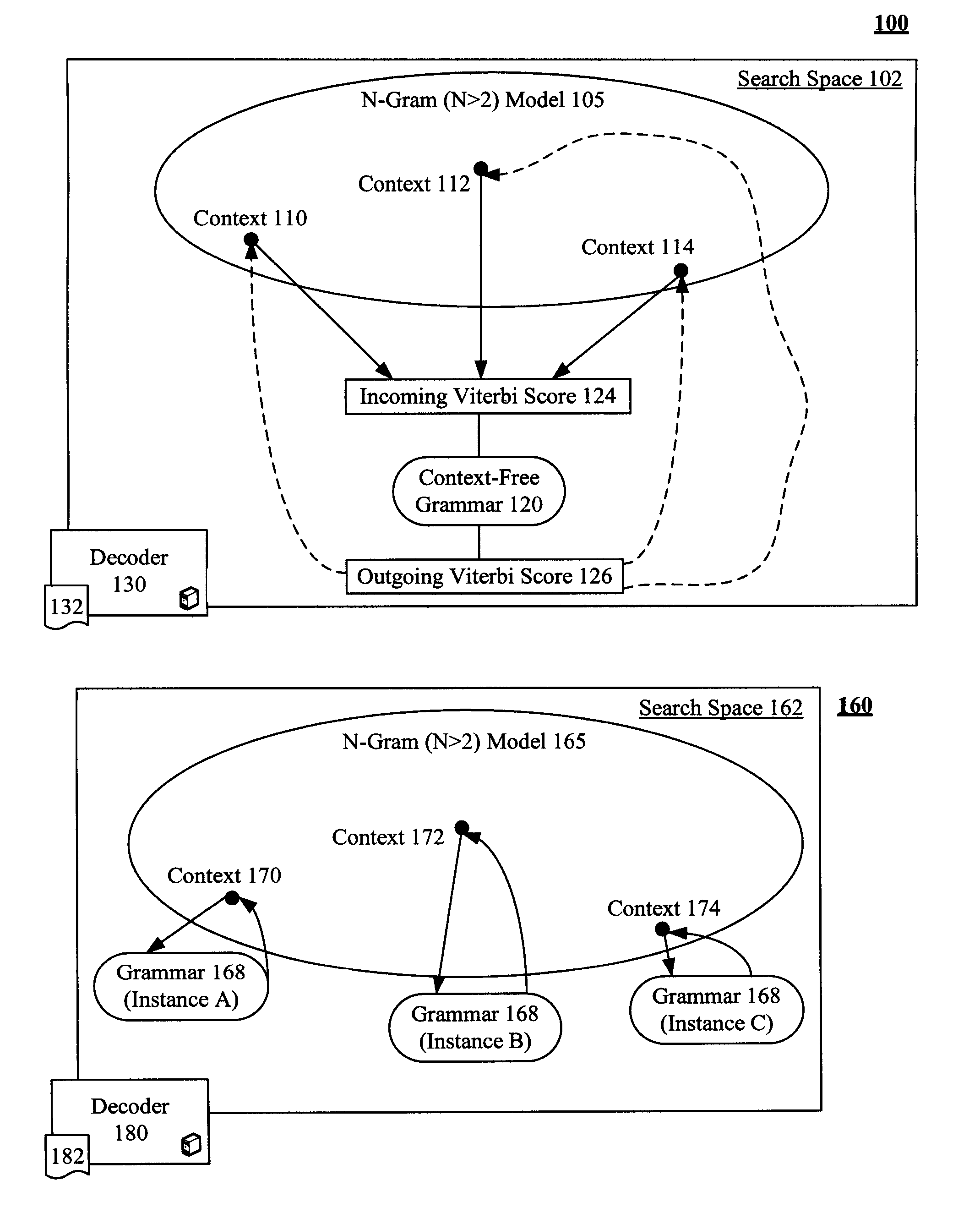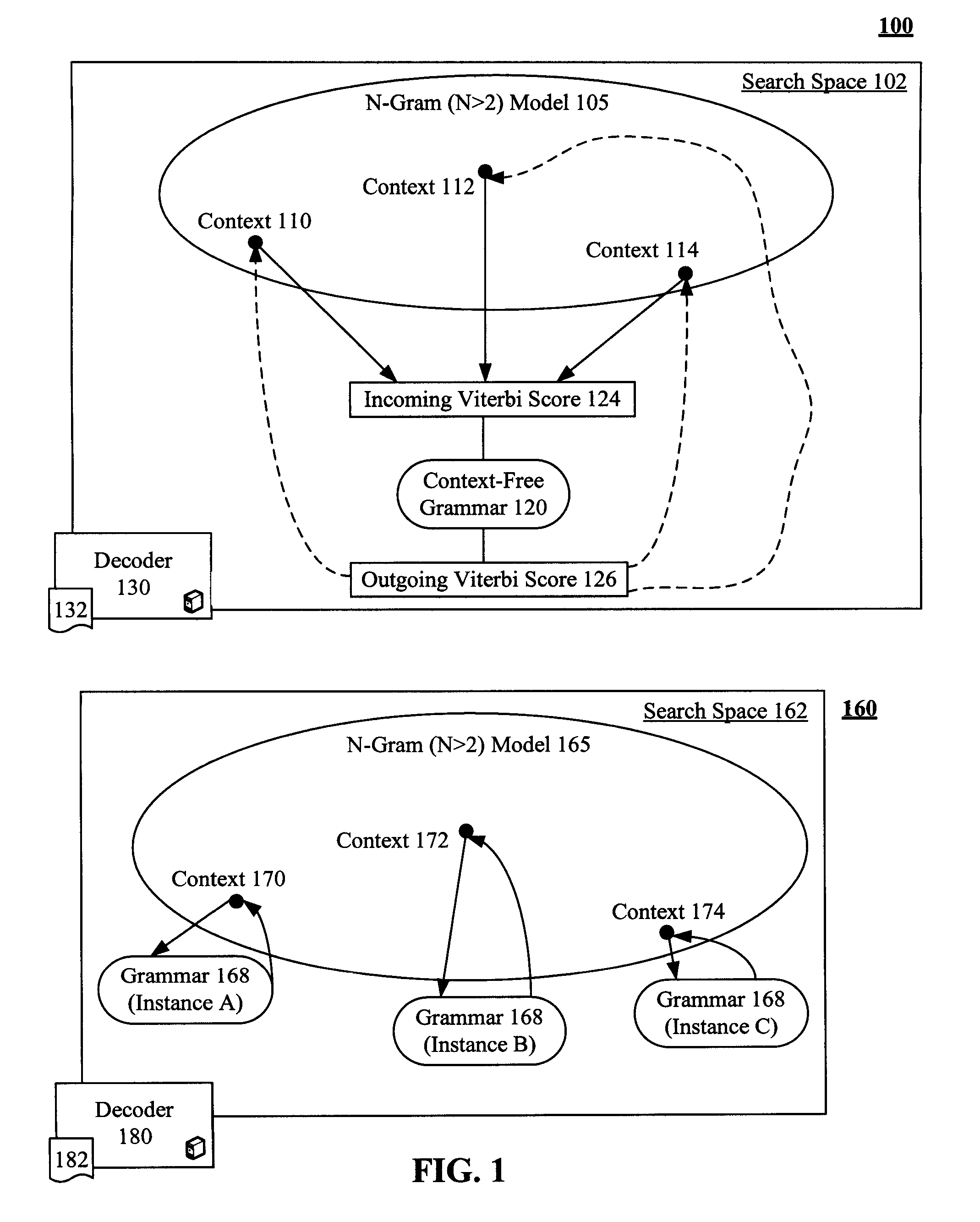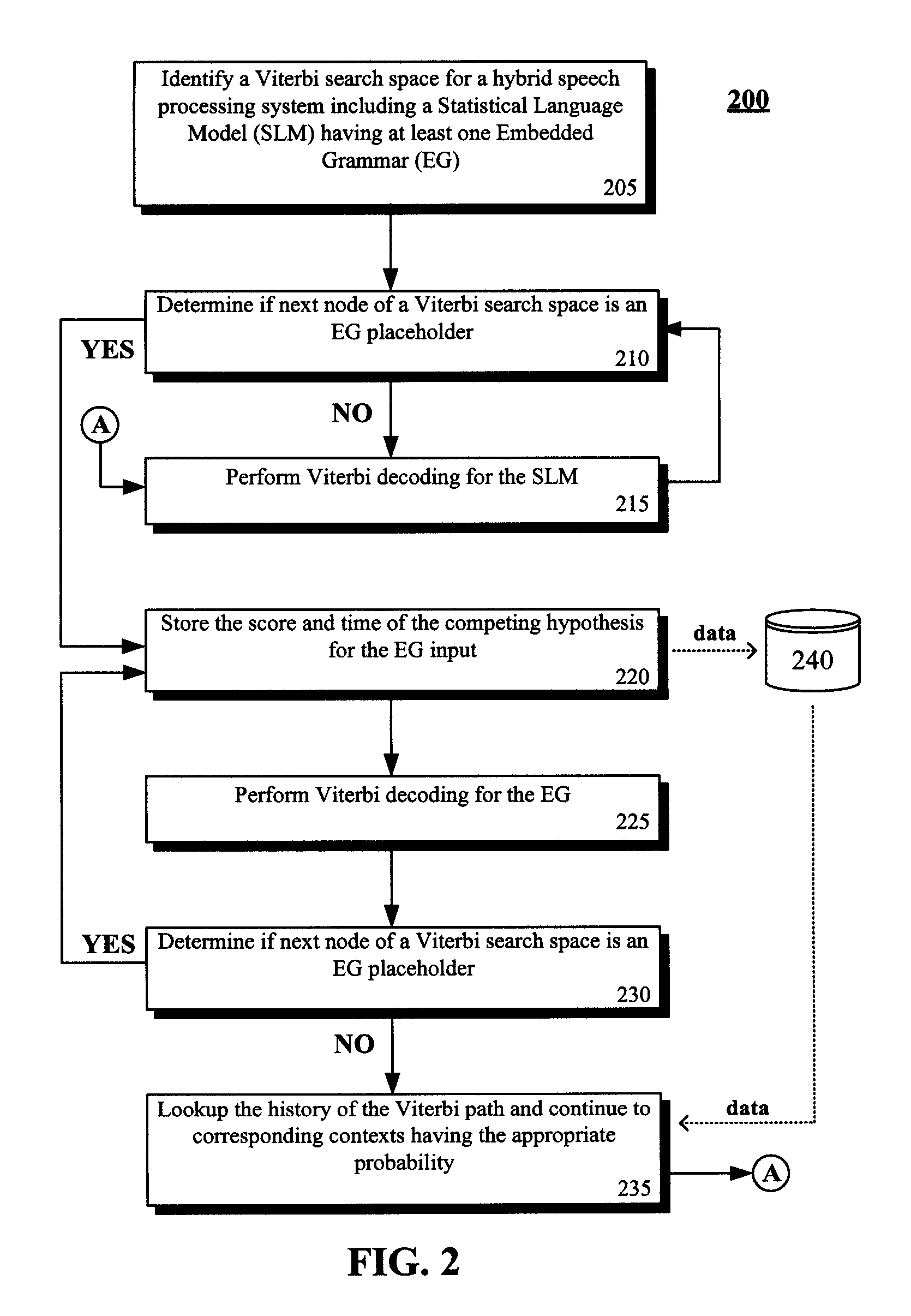Enhancement to Viterbi speech processing algorithm for hybrid speech models that conserves memory
a hybrid speech model and memory-saving technology, applied in the field of speech recognition, can solve the problems of large size of speech corpus for generating slm, insufficient accuracy of slm based systems, and speech recognition grammars that fail completely for unexpected inputs, so as to reduce the complexity of a viterbi search, reduce the amount of memory needed, and reduce the need for cpu requirements
- Summary
- Abstract
- Description
- Claims
- Application Information
AI Technical Summary
Benefits of technology
Problems solved by technology
Method used
Image
Examples
Embodiment Construction
[0022]FIG. 1 is a schematic diagram of a system 100 that reduces a search space 102 handled by a speech recognition decoder 130 to efficiently process a language model 105 containing one or more context 110-114 of context free grammar 120. Reducing the search space 102 reduces an amount of memory needed and reduces needed CPU requirements. The task of decoder 130 is to combine the probabilities and rules given by all the model components in space 102 to find a word sequence that best matches with a given speech segment. The decoder 130 can utilize a decoding algorithm 132, which can be based upon the Viterbi algorithm. System 160 is shown for comparison purposes and illustrates a conventionally implemented speech recognition system.
[0023]The language model 105 can be an N-gram model where N is greater than two. The context-free grammar 120 can be an encapsulated grammar of language model 105 referred to as an embedded grammar (EG). The language model 105 can have one or more EGs, ea...
PUM
 Login to View More
Login to View More Abstract
Description
Claims
Application Information
 Login to View More
Login to View More - R&D
- Intellectual Property
- Life Sciences
- Materials
- Tech Scout
- Unparalleled Data Quality
- Higher Quality Content
- 60% Fewer Hallucinations
Browse by: Latest US Patents, China's latest patents, Technical Efficacy Thesaurus, Application Domain, Technology Topic, Popular Technical Reports.
© 2025 PatSnap. All rights reserved.Legal|Privacy policy|Modern Slavery Act Transparency Statement|Sitemap|About US| Contact US: help@patsnap.com



